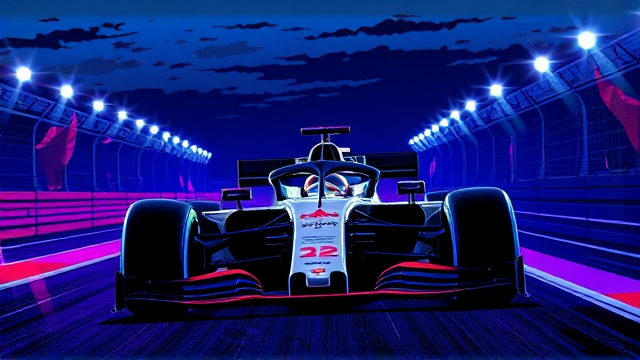Heat Threat Possible for US Grand Prix Weekend in Austin.
The upcoming United States Grand Prix in Austin is bracing for a formidable opponent that has nothing to do with aerodynamic downforce or power unit modes: an unrelenting and potentially dangerous heatwave. Forecasts are projecting air temperatures to soar to a sweltering 33 degrees Celsius (approximately 91 degrees Fahrenheit) on both Friday and Sunday, conditions that are not merely uncomfortable but could trigger the FIA's official 'Heat Threat' protocol, a measure last seen looming over the humid, taxing Singapore Grand Prix where temperatures hit 31 degrees.This isn't just about driver discomfort; it's a critical operational and strategic challenge that separates the prepared from the desperate. When a Heat Threat is declared, it mandates a complete and non-negotiable shift in team procedure.Every single driver, regardless of personal preference or team strategy, must utilize specialized cooling vests and the accompanying equipment designed to keep core body temperatures from reaching dangerous, performance-sapping, and potentially life-threatening levels. The regulations leave no room for debate or machismo; if a driver were to refuse the vest, a fascinating and punitive rule comes into play.The team is still forced to install all the cooling equipment in the monocoque, and to maintain the car's minimum weight, an equivalent ballast is added, meaning the driver carries the weight penalty without any of the physiological benefits—a fool's errand in a sport where every gram and every fraction of a degree matters. This scenario, as reported by RacingNews365, is highly probable for the Circuit of the Americas, turning the Texas track into a pressure cooker that tests human endurance as much as mechanical reliability.The comparison to Singapore is instructive but incomplete. While Singapore's heat is a constant, draining presence exacerbated by its night-race schedule and high humidity, Austin's challenge is one of sheer, dry radiant heat combined with the intense G-forces of a modern F1 car.Inside the cockpit, temperatures can routinely exceed 50°C (122°F), creating an environment where dehydration, loss of concentration, and physical failure are constant risks. We've seen this movie before, with drivers like Esteban Ocon famously vomiting in his helmet post-race in Qatar or others losing several kilograms of body weight in a single event.The broader context here is the evolving, and often conflicting, philosophy within Formula 1 regarding driver safety and spectacle. The FIA, under its medical delegate, must balance the show with the undeniable duty of care.Implementing the Heat Threat protocol is a clear acknowledgment that the human element has a breaking point, a line that cannot be crossed for entertainment. This introduces a layer of strategic intrigue beyond tire management and pit stops.Teams with superior cooling systems, both for the power unit and the driver, gain a tangible advantage. A driver who remains cognitively sharp for five laps longer than his rival in the final stint, his decision-making unimpaired by heat stress, can overtake or defend with precision that a fatigued competitor cannot muster.Furthermore, this situation reignites the debate about the sport's grueling calendar, which now stretches to 24 races across every conceivable climate. Are we pushing the athletes too far? The physical conditioning of modern F1 drivers is akin to that of elite marathon runners or Tour de cyclists, but even the fittest human body has its limits when subjected to such extreme environments.Expert commentary from sports physiologists would likely point to the cumulative effect of such events on a driver's season-long performance and long-term health. The consequences of getting it wrong are severe; a momentary lapse in concentration induced by heat exhaustion could lead to a catastrophic accident, not just for the driver involved but for others on track.Looking back, historical precedents like the tragic death of Ayrton Senna, while not heat-related, forced the sport to re-evaluate its safety protocols comprehensively. Today's proactive measures, such as the Heat Threat, represent a cultural shift from reactive tragedy management to proactive risk mitigation.In Austin, the battle for victory will be fought on two fronts: the tarmac, where Red Bull, McLaren, and Ferrari will duel for supremacy, and within the confines of the cockpit, where every driver will be in a personal fight for survival against the Texan sun. The team that best manages this dual challenge, that keeps its driver cool-headed in every sense of the word, will likely be the one spraying the champagne on the podium, a sweet reward for conquering one of motorsport's most primal and demanding adversaries.
Latest News
The full-time whistle at Windsor Park provoked a complex symphony of emotions that perfectly encapsulated Northern Ireland's heartbreaking yet heroic 1-0
20 minutes ago0 comments
The Tennessee Titans' decision to fire head coach Brian Callahan on Monday, with the team mired at 1-5, was not a sudden shockwave but the inevitable
30 minutes ago0 comments
The beautiful game, so often a theater of dreams, once again finds itself an unwilling stage for the world’s most intractable conflicts as the Italian national
50 minutes ago0 comments
The ice was absolutely electric last night, folks, as the NHL’s regular season continued to deliver the kind of drama we live for.
1 hour ago0 comments
In the charged atmosphere of a rivalry that divides a state and captiVates a nation, Utah head coach Kyle Whittingham executed a strategic sidestep that spoke
1 hour ago1 comments
The name Robinho evokes a specific brand of Brazilian footballing magic—the samba rhythm on the ball, the audacious dribbles, the weight of a nation's
2 hours ago0 comments
The UFC's relentless march towards the end of the year delivers another blockbuster with UFC 323, set to electrify the T-Mobile Arena in Las Vegas on the night
2 hours ago1 comments
In a move that perfectly encapsulates the delightful unpredictability of modern football culture, Russian national team and Dynamo Moscow manager Valery Karpin
3 hours ago1 comments
It’s quiet here...Start the conversation by leaving the first comment.
